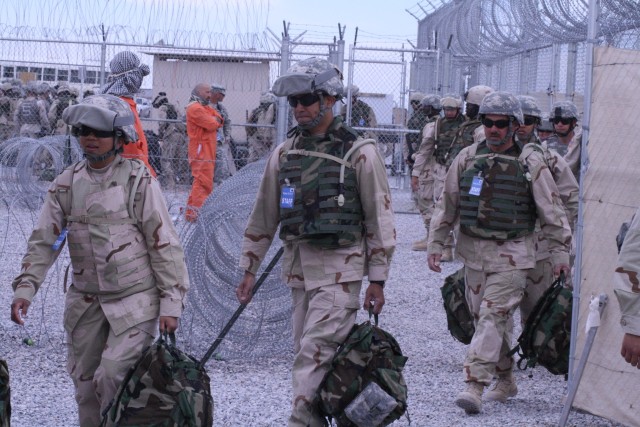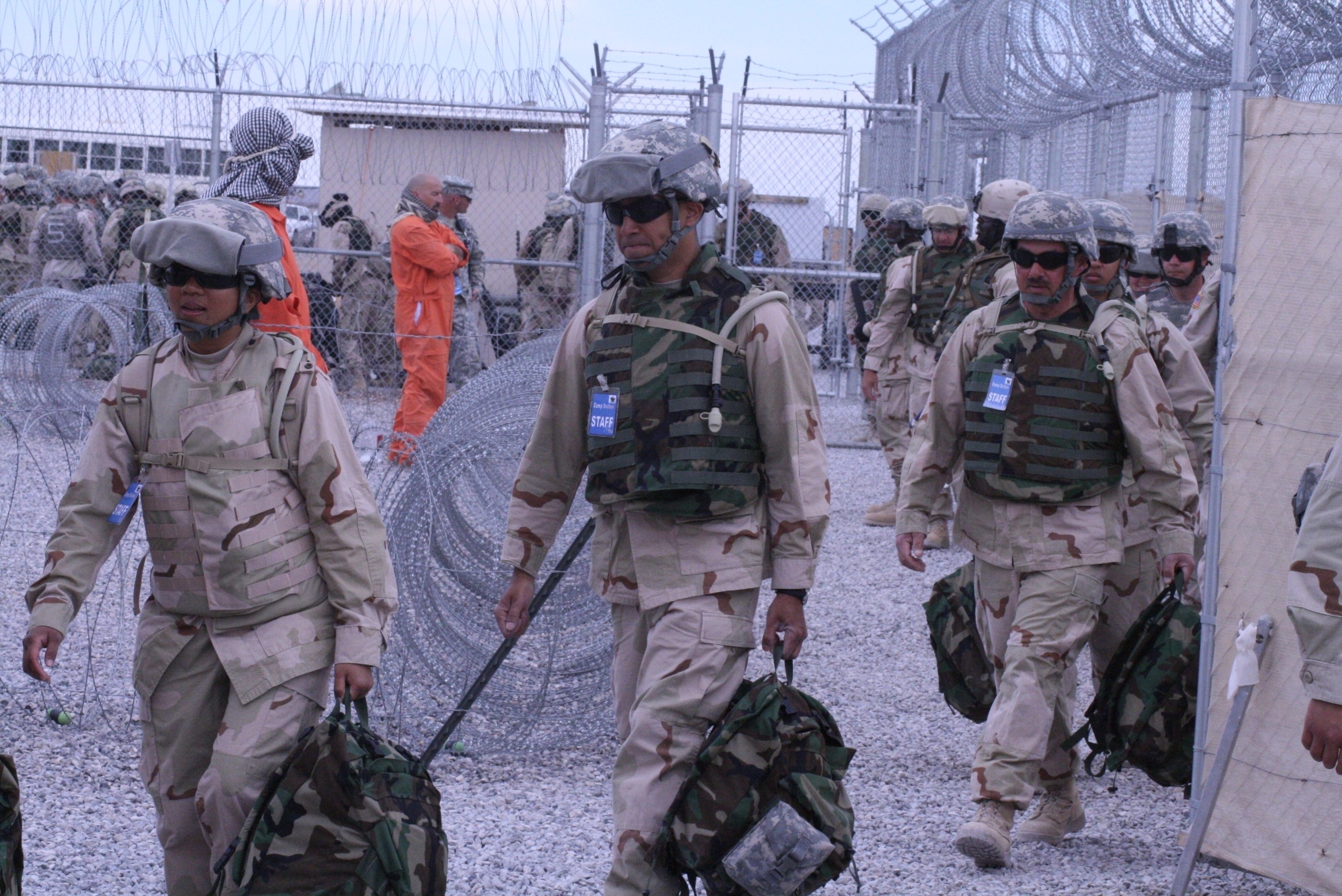Task Force Outlaw Soldiers are training several hundred Navy Sailors at Fort Bliss. The Sailors are scheduled to deploy to Iraq and Afghanistan where they will maintain custody and control of detainees.
"We're going to run a detainee camp," said Petty Officer 3rd Class Benjamin Benuck, Navy Provisional Detainee Operations Battalion, U.S. Navy. "And we are to make sure they are treated humanely and with respect."
Task Force Outlaw is one of four task forces under the Operation Warrior Trainer Program conducted by the 402nd Field Artillery Brigade, Division West, First Army. The OWT program employs personnel who have recently returned from theater as observer controller trainers to conduct pre-deployment training for deploying Soldiers, Sailors, Airmen, and Marines.
"The training that these guys get here will help them immensely," said Staff Sgt. Edward Cartwright, 701st Military Police Battalion. "When it's hot it's hot, when there are sandstorms they train, so these Soldiers are getting some of the most realistic detainee ops training that the Army has to offer here at Fort Bliss, Texas."
Recent concerns regarding diversity among religious sectors within detainee compounds are being addressed in the training.
"In detainee operations they do the best to try to separate each religious sect to minimize any type of sectarian violence," said Staff Sgt. Brian Murphy, OCT, TF Outlaw, 402nd FA Bde.
The Sailors who form part of the NPDB, are scheduled to deploy within the following weeks and are receiving doctrinal as well as hands on training leading to a culminating field training exercise. The FTX is carried out at McGregror, N.M., range in detainee camps that replicate detainee facilities in theater. The Sailors are presented with different scenarios and are evaluated on the correct application of tactics, techniques and procedures to include rules of engagement and proper use of force.
"They're using all the individual tasks they've learned in Task Force Outlaw," said Capt. Bryan Chubinsky, OCT, TF Outlaw. "They put it all together collectively as a team inside the compound where they're running a compound with detainees as they would in theater."
Civilian contractors play the role of detainees during the training. Having the Sailors interact with these role players allows them to experience the extreme of emotions that certain situations may trigger. Benuck was tasked with having to manage a hostage situation where he realized that controlling oneAca,!a,,cs emotions can be very challenging.
"Emotions really run high," Benuck said. "Take emotion out of it. It's the hardest thing to do. The adrenaline's pumping, you're there you have a job to do, ... you have to get it done."
Avionics Technician, Petty Officer 1st Class James Hardin, NPDB, said he was also involved in resolving some hostage situations during one of his training exercises and was able to manage it successfully by using effective communication.
"It started out pretty rough," Hardin said. "We were able to communicate and negotiate, and provide very little in return to get our hostages back. The things that the Army taught us about interpersonal communication skills work very well to deflate a situation that can become very nasty."
"You never want to escalate," said Spc. Timpthy Zepeda, OCT, TF Outlaw. "But you do want to make sure that you're ready for the worst."
The Sailors feel their level of confidence increases with each additional day of training.
"We're more confident everyday," said Petty Officer 1st Class Eddie Huck, NPDB. "We have two more days of training and I'm sure by then we'll be thoroughly trained."




Social Sharing